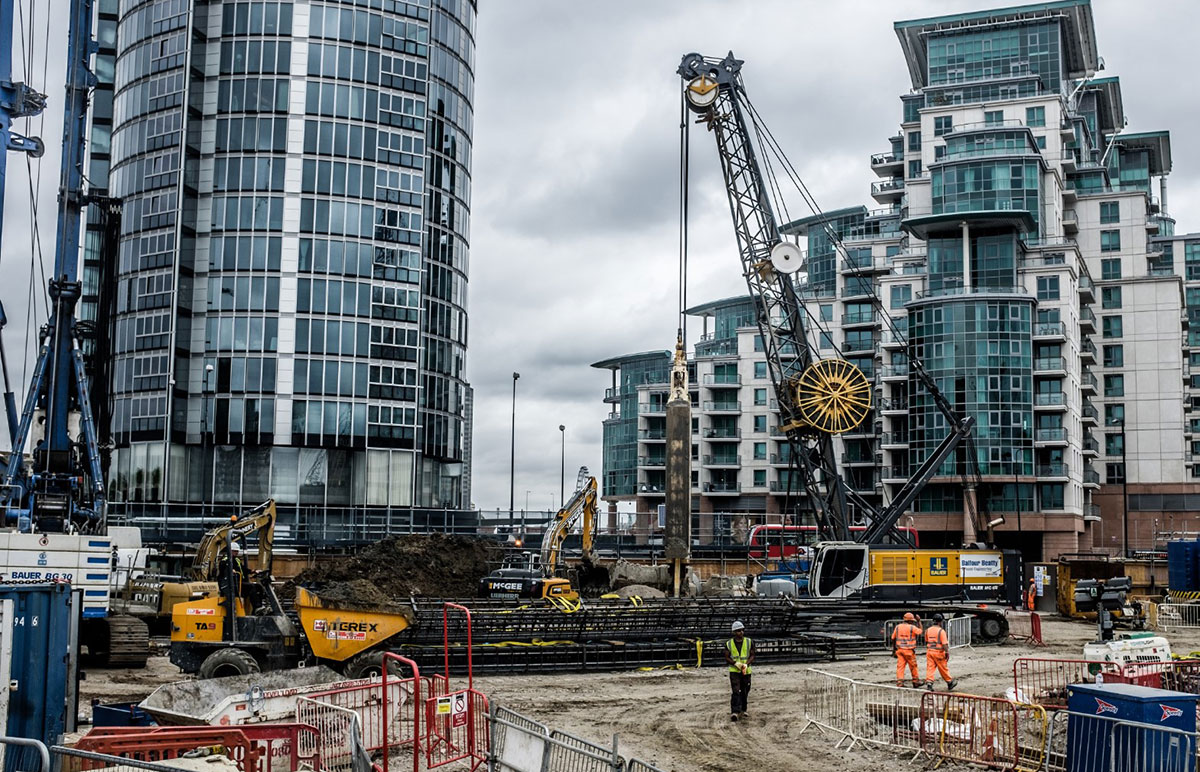Geotheta Fundamentals Explained
Geotheta Fundamentals Explained
Blog Article
Not known Factual Statements About Geotheta
Table of ContentsGeotheta Fundamentals ExplainedGeotheta - TruthsGetting My Geotheta To WorkThe 7-Minute Rule for Geotheta
They work together with civil designers, structural designers, designers, and other experts to integrate geotechnical factors to consider right into the general job style and building and construction procedure. This requires efficient synergy, sychronisation, and communication to guarantee that the geotechnical aspects align with the project objectives and fulfill governing needs.Mining & Materials Design: Principles of drilling, infiltration rates, and factors influencing the selection of drilling method. Blasting methods in surface and below ground operations. Mechanical and continual approaches to fragmentation, consisting of longwall shearing and fullface boring.
Modelling of fragment and fragment dimension distributions; comminution as a transfer function. Comminution technology: squashing, grinding, dimension classification. Integrated analysis of fragmentation and comminution operations. Supplied by: Mining & Materials Engineering.
The smart Trick of Geotheta That Nobody is Discussing
Bachelor's level programs in civil, geotechnical, geological, and ecological engineering commonly last four years and include general education programs in English, social science, and the liberal arts, in addition to courses in advanced mathematics, architectural geology, and fluid mineralogy. (https://www.slideshare.net/ianhammond2191)
Geotechnical engineering involves the analysis of the soil and rock problems at a specific website, and their ramifications for the growth of that website. As the majority of frameworks depend on the ground for support, it lacks shock that a thorough understanding of the ground problems, and the suitability of structure systems, are vital to the lasting stability and performance of the structure or structure.
Specialising in the examination of geological developments and ground behavior, geotechnical engineers execute clinical investigations and testing to understand the effect these geological formations might have on the design and construction of building, civil and infrastructure tasks. This knowledge is critical for the layout and construction of buildings, roadways, passages, dams, bridges, and supply of water and sewer systems.
The geotechnical team at Douglas Partners consistently speak with architects, layout designers, developers, and home builders to make suggestions on design and development propositions to make certain that the constructed structures are appropriately created for the ground problems. For instance, the layout of footing systems requires to think about the weight of the framework, the capacity of the ground to sustain that weight together with activity tolerances and effective building.
How Geotheta can Save You Time, Stress, and Money.
This job is considerably streamlined by the use of our Douglas Map geospatial system that makes this details easily obtainable in an easy to utilize web browser interface. A geotechnical engineer will direct the boring of boreholes and test pits to gather dirt and other samples, and likewise analyze surface attributes and ground exposures to develop a geotechnical design of the subsurface conditions.
Relying on the project type and ground problems encountered, lab testing may to name a few things assess stamina, compressibility, reactivity and/or leaks in the structure of soil and rock samples. After this information is gathered and collated, the results are made use of for a geotechnical version of the site, which is usually provided as sections throughout the site.

A geotechnical examination naturally can just analyze the ground problems at the areas drilled or dug deep into. All-natural variants in dirt and rock problems can take place across a website and in between test places. It is consequently excellent practice that the geotechnical engineer be kept throughout building and construction of the project to provide on-site verification that the ground conditions run into are constant with the expectations and recommendations supplied in the geotechnical investigation report.
5 Simple Techniques For Geotheta
Geotechnical engineers utilize their in-depth knowledge of dirt and rock to examine threat and fix issues on read this article diverse facilities projectsGeotechnical engineering is a specialist branch of civil design which looks at the practices of planet products and the application of dirt and rock mechanics. Engineer of Record. As a geotechnical designer, you will certainly examine the physical, mechanical and chemical residential or commercial properties of dirt and rock in order to develop structures, retaining frameworks and earthworks
Geotechnical engineering is very closely connected to and overlaps with, both engineering geology and ground design - https://geotheta.bandcamp.com/album/geotheta. It's possible to specialise in geotechnics or benefit a geotechnical company but be known as a design rock hound or a ground designer. As a geotechnical designer, you'll need to: construct and preserve connections with customers and other experts associated with the site, throughout each projectmaintain safety standards on website bear in mind cost implications when you make recommendationsstudy geological maps and airborne photos from a variety of resources and from various time periodsexamine building and construction prepares to see just how feasible they are based upon your understanding of the siteinvestigate risks or geological dangers for the sitesearch for environmentally delicate functions, such as garbage dump begin to develop factual and interpretive ground modelsplan field investigationsdrill and analyse samples of bedrock, soil, groundwater and extra materials monitor other experts on sitesolve technical problems as they emerge, such as unanticipated structures at drill sitesmonitor problems during and after construction to make certain structures are secure in the short and long termadding data collected on site to your first researchcreating geotechnical calculations, illustrations, and 2 or three-dimensional computer system models translating the datamaking recommendations regarding the recommended use the site

Report this page